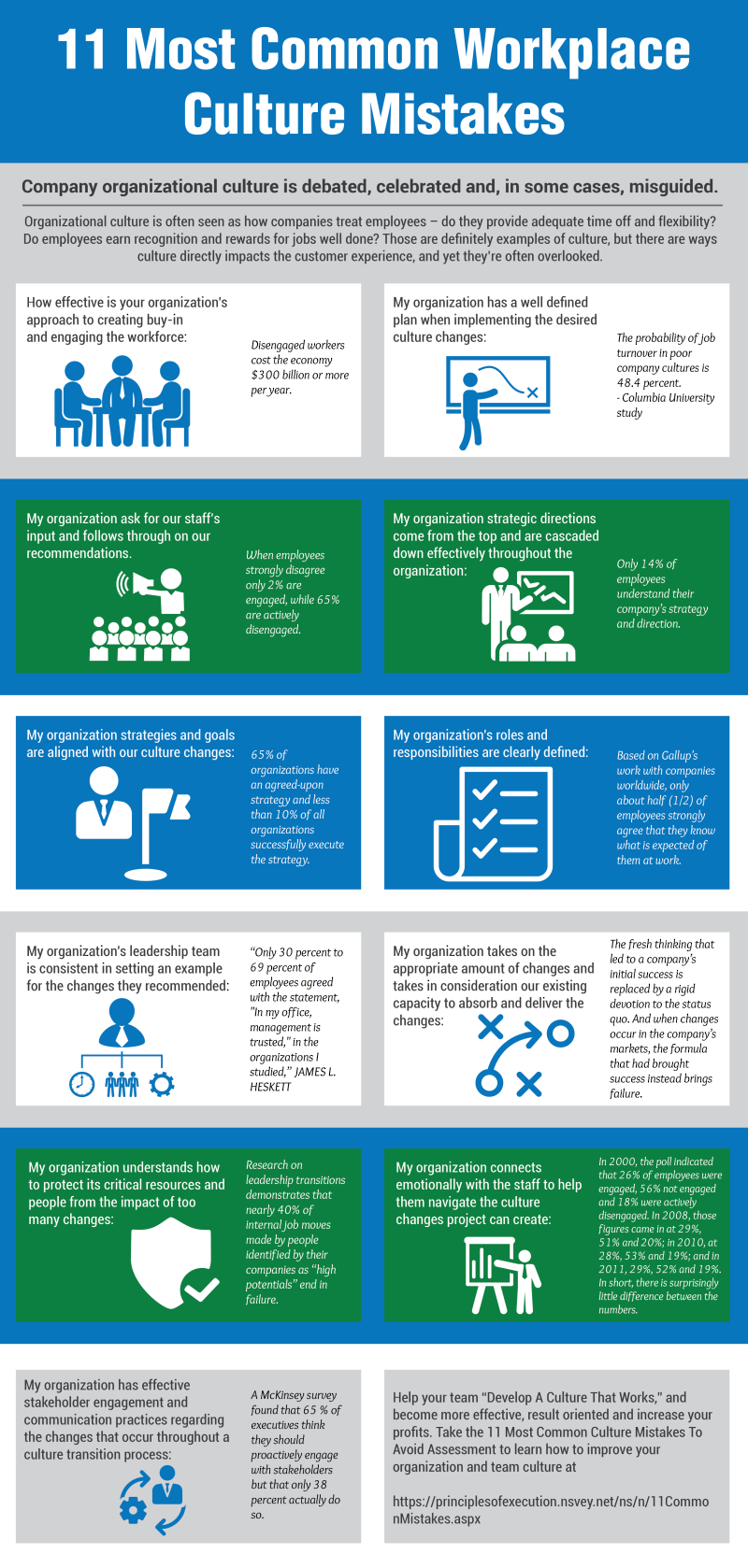Even in the best of circumstances, there are pitfalls and mistakes people and organizations make when attempting to develop a culture that works. In this video, I'll discuss the top 11 common workplace culture mistakes that companies make when implementing a culture change in their organization.
To learn more, click here:
When running a business, you need to ensure your business culture fits your company's ideals. Be sure to avoid these 11 common workplace culture mistakes.
Workplace culture is a very important aspect when it comes to running a successful company. Your responsibility is to develop and establish the kind of culture that will best fit your business ideas. Don't let these common mistakes inhibit you from creating a thriving workplace culture.
1. Not Engaging With Staff
Technology has done wonders for the growth of business worldwide, but it has also made it more complex for leaders to engage with employees. Not engaging with your staff will leave you with employees who are uninterested in their jobs. You have to put in the effort to connect with your employees. Workplace culture starts at the top and trickles down. If you want your team members to buy into the process, you need to engage with your staff.
2. Poor Implementation
Bringing about culture change without a plan will result in poor implementation. Consider writing a charter for every culture change you want to implement. This should include the goals, objectives, and scopes of change. A solid plan will help everyone know how you plan to go about implementing culture change.
3. Not Following Through
As you implement your plan, you may get feedback from your staff. There are two types of feedback: encouragement or criticism. Regardless of good or bad feedback, you need to take advantage of recommendations. If you're not paying attention to your employees, they will eventually become disengaged. Let the staff know that you are listening to their needs and follow through on changes that can be made for the better.
4. Too Many Directions
If employees are getting directions from multiple people, it starts to present some challenges. Too many directions can easily be misconstrued and confuse your employees or eventually lead to culture drift. Make sure that only one set of directions is given from the top.
5. Not Aligning With Strategy
All cultural changes need to align with strategic direction. You want to support your strategy, not distract from it. Make sure that your employees are aware of the direction your organization is heading in. Putting into place a measuring system can help you align changes with your strategic direction.
6. Lack of Clear R & R
Roles and responsibilities are important and need to be clear. Putting together a RACI (Responsible Accountable Consulted Informed) chart can help you lay out the specifics, including the names of different roles and the processes, and can give a clear overall line of responsibility for your organization.
7. Being Inconsistent
Inconsistent leadership will lead your staff to be unsure about changes. Don't change the process and then change it again. Come up with a plan and stick to it. Consistency is the key to success.
8. Too Many Changes
Dropping several changes on your employees all at once can be overwhelming and confusing. You need to give your employees time to absorb change. Each new change should be introduced on an incremental basis.
9. Not Protecting Critical Resources
Use your resources wisely. While you may have a few valuable employees who harbor a critical skill set, make sure that they are not being pulled every which way. Too much multitasking can lead to total burnout. Protect them because they are a valuable asset to your business.
10. Not Connecting Emotionally
Business leaders often fail at connecting with their employees on an emotional level. Emotional connection is built by getting to know your staff on a personal level.
11. Poor Stakeholder Communication
Partnerships require a solid communication plan. Keep stakeholders up to date with changes that occur in your culture transition process. If you have a solid plan laid out, you'll be able to communicate across the board.
By avoiding these 11 common mistakes, you'll be able to make changes within your business with minimal disruption.

